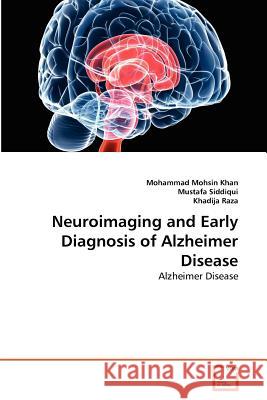Neuroimaging and Early Diagnosis of Alzheimer Disease » książka
Neuroimaging and Early Diagnosis of Alzheimer Disease
ISBN-13: 9783639372014 / Angielski / Miękka / 2011 / 80 str.
Alzheimer disease (AD), a progressive neurodegenerative disorder, is the most common cause of dementia in the elderly. Current consensus statements have emphasized the need for early recognition and the fact that a diagnosis of AD can be made with high accuracy by using clinical, neuropsychologic, and imaging assessments. Magnetic resonance (MR) or computed tomographic (CT) imaging is recommended for the routine evaluation of AD. Coronal MR images can be useful to document or quantify atrophy of the hippocampus and entorhinal cortex, both of which occur early in the disease process. Both volumetric and subtraction MR techniques can be used to quantify and monitor dementia progression and rates of regional atrophy. MR measures are also increasingly being used to monitor treatment effects in clinical trials of cognitive enhancers and antidementia agents. Positron emission tomography (PET) and single photon emission CT offer value in the differential diagnosis of AD from other cortical and subcortical dementias and may also offer prognostic value.
Alzheimer disease (AD), a progressive neurodegenerative disorder, is the most common cause of dementia in the elderly. Current consensus statements have emphasized the need for early recognition and the fact that a diagnosis of AD can be made with high accuracy by using clinical, neuropsychologic, and imaging assessments. Magnetic resonance (MR) or computed tomographic (CT) imaging is recommended for the routine evaluation of AD. Coronal MR images can be useful to document or quantify atrophy of the hippocampus and entorhinal cortex, both of which occur early in the disease process. Both volumetric and subtraction MR techniques can be used to quantify and monitor dementia progression and rates of regional atrophy. MR measures are also increasingly being used to monitor treatment effects in clinical trials of cognitive enhancers and antidementia agents. Positron emission tomography (PET) and single photon emission CT offer value in the differential diagnosis of AD from other cortical and subcortical dementias and may also offer prognostic value.











